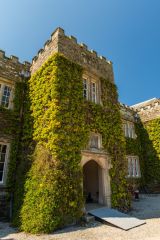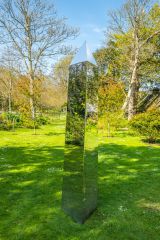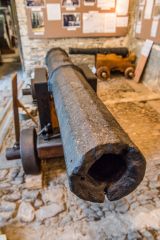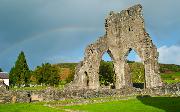
History
The house was built by Sir Nicholas Prideaux in 1592. Sir Nicholas, a lawyer by profession, moved to Padstow from Devon, and created a typical Elizabethan mansion, laid out in an E-shape.
The Prideaux family supported the Parliamentary side in the Civil War, and might have expected to lose power and perhaps their property at the Restoration of the monarchy. However, just before the return of Charles II to the throne in 1660 the family arranged an advantageous marriage between the daughter of the owners and William Morice of Werrington, who was Charles' Secretary of State.
As a result of this clever bit of 'marriage diplomacy', Charles granted the Prideaux family a royal pardon for their role in the Civil War. The pardon is on display to visitors in the house, but perhaps the most impressive feature of this early period in the history of Prideaux Place is the Elizabethan plasterwork ceiling in the Great Chamber, a superb example of 16th century art.

The Elizabethan core of the house has been adapted twice; the first time in the 17th century by Edmund Prideaux. Edmund, like most young men of means at that time, went on a Grand Tour of Europe, and he came home filled with ideas for remodelling his family home on classical lines. Edmund also laid out the gardens that set off the house so beautifully.
Here the effect of classical influence is obvious, with ancient temples, a grotto, obelisk, an excedra, and carefully arranged funerary urns add to the sense of a classical landscape. In addition to the neo-classical features, the gardens include a lime avenue, a 19th century formal garden, woodland walks, and an acer glade, where thousands of spring bulbs bring colour early in the year.
The next major change came in the early 19th century, when Rev Charles Prideaux-Brune redecorated the house in the style of Horace Walpole's Strawberry Hill Gothic. The result is a pleasing blend of Elizabethan and exuberant fantasy Gothic.
During World War Two one wing of the house was used by the military, and housed the 121st Engineer Combat Battalion of the US Army. The area of the house used by the Americans has been left exactly as it was on the day the troops left to take part in the D-Day landings.
The house interiors boast beautiful antiques, porcelain, and fine furniture. Prideaux has been used as the setting for a number of films of the novels by Cornish author Rosamund Pilcher, made primarily for German audiences. So popular are the films in Germany, Austria, and Switzerland that Prideaux has become something of a magnet for tourists from those countries.








 We've 'tagged' this attraction information to help you find related historic attractions and learn more about major time periods mentioned.
We've 'tagged' this attraction information to help you find related historic attractions and learn more about major time periods mentioned.






